What are the benefits of Environmental Education?
Environmental education (EE) is praised by educators for its ability to combine different subjects, support the growth of young people academically and socially, and encourage the protection of nature.
We examine a few of EE’s many benefits below:
- Improves Academic Achievement
- Encourages Environmental Stewardship
- Deepens Personal Development and Wellbeing
- Strengthens Communities
Environmental Education Improves Academic Achievement
Using outdoor settings like the schoolyard, nearby parks, or public lands like wildlife preserves, wetlands, or even national parks can infuse a sense of richness and relevance into a traditional school curriculum. In addition to gaining valuable skills and environmental knowledge, students often experience advances in other academic areas.
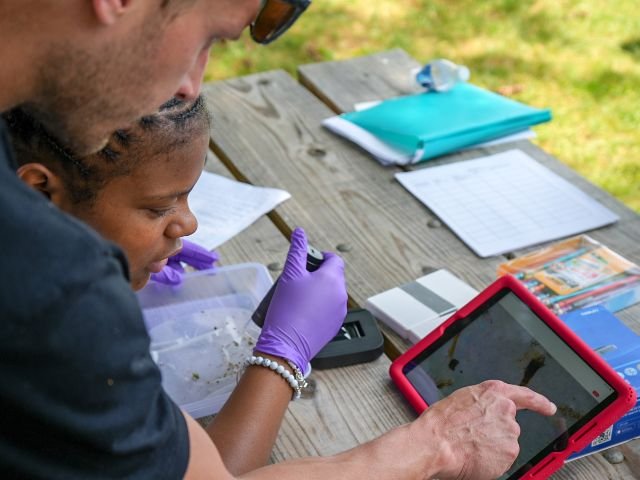
Environmental Education Generates Greater Student Engagement
In a world where it is increasingly challenging to get students interested in classroom lessons, environmental education offers an enriching way for students and teachers to connect their appreciation of the natural world to academics.
In a study examining how outdoor learning influences the satisfaction of basic psychological needs, researchers collected data relating to a week of learning in two educational settings: a regular classroom and a residential outdoor learning course. These two settings incorporated social learning, personal development, and ecological knowledge in a regional context, as students worked in groups to learn about various science topics. Students completed questionnaires in each educational setting to evaluate the effect that each had. Additionally, researchers held group-interviews that provide insight into students’ attitudes and beliefs.
Data analyses show that basic needs satisfaction in the outdoor context is higher than indoors and more significantly, the outdoor program had the biggest increase in the students’ intrinsic motivation. When students have higher intrinsic motivation, their behavior is driven by internal rewards, rather than extrinsic rewards, such as bad grades. Thus, learning is more naturally satisfying, and students are more engaged.
Supporting research also asserts that environmental education and outdoor programs utilizing explorative learning can drastically improve the student’s learning attitudes. Additionally, when these outdoor learning experiences are implemented by trained teachers in familiar settings, students are more engaged and experience greater science achievement.
Environmental education and outdoor programs utilizing explorative learning can drastically improve students' learning attitudes.
------------------------------
Environmental Education Develops Confidence in Investigating and Solving Local Issues
Environment-based education emphasizes specific critical thinking skills central to “good science”—questioning, investigating, forming hypotheses, interpreting data, analyzing, developing conclusions, and solving problems.
For example, high school students in an intensive, urban ecology-focused summer program conducted scientific investigations of their urban ecosystems using geographic information systems (GIS) and computer modeling. Through these tools, the students learned about the ecological services provided by the urban forest canopy and about the impact of urban noise on birdsong.
By tackling real-world projects as opposed to merely doing workbook exercises, the students improved their science self-efficacy. Through conducting pre and post surveys of students on their beliefs and experiences during this study, researchers found that by engaging students in local and focused targeted environmental science investigations, the students developed the confidence to investigate and solve local problems that increased their ability to study science.
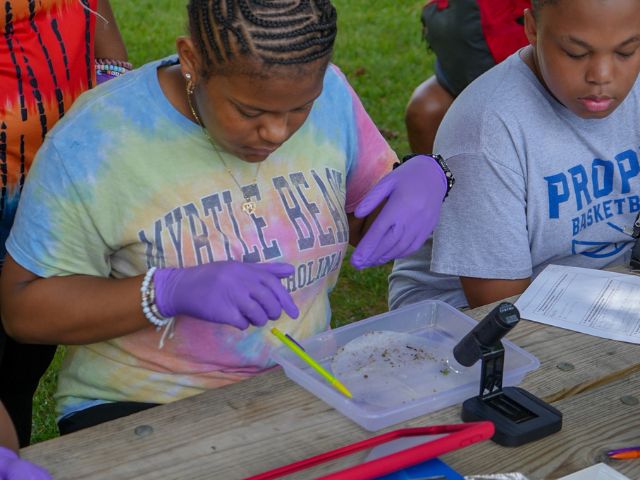
I take students to places where they can see evidence of [environmental] problems…I am inspired by their creativity and persistence in finding solutions.
Kathleen McLean, a teacher at Great Falls Public School in Great Falls, Montana
Environmental Education Fosters Interest in STEM Careers
As the world becomes increasingly interconnected and complex, the youth need to be equipped with the skills and knowledge to investigate and solve problems. Since those in STEM careers are often tasked with finding solutions to the world’s problems, students must be introduced to these skills and begin learning about careers in STEM from a young age.
In 2014, an experimental study examined the impact of a citizen science program on middle school students’ science performance and STEM career motivation. Students conducted fieldwork with naturalists and collected data related to horseshoe crabs that would be used by professional biologists. The results supported hypotheses that students would report higher motivational beliefs regarding science and show higher levels of achievement. Further analyses showed that these motivational beliefs influenced content knowledge and outcome expectations, which then influenced career goals.
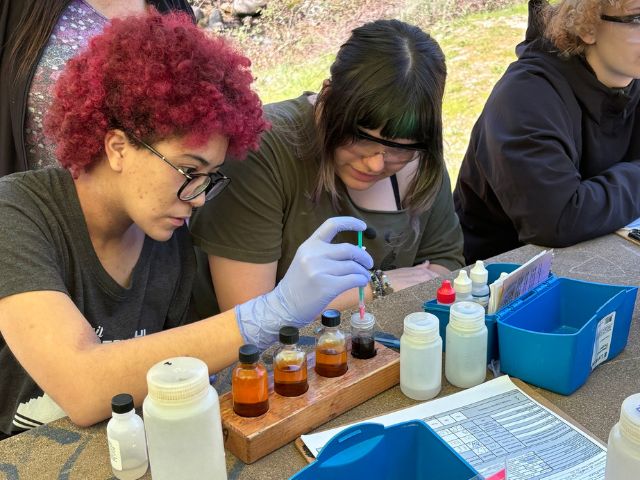
Environmental Education Enhances Student Creativity
Environmental education courses typically expect to produce results such as positive impacts on students’ environmental attitudes, beliefs, and knowledge. Due to the nature of program design, courses can also develop other skills in students.
In one study on a project-based learning environmental education course where students developed projects to solve environmental problems, students were found to not only have increased positive environmental attitudes but also enhanced creativity. When working together to collaborate and seek unique solutions to problems, they were able to hone into their creativity and take on more active tasks in the solution process.7
Incorporating aspects of environmental education into STEM topics can help illustrate the power of environmental education. It can also be combined with art instruction to deepen understanding of both areas.
A research paper examining the intersection of public art, nature, and environmental education states that the benefits are:
- Promoting intellectual development
- Encouraging inspiration
- Supporting consciousness about social and environmental issues
- Developing a sense of connection with nature
- Teaching how to ask questions and examine contextual information
Environmental Education Encourages Environmental Stewardship
In the environmental education field, educators hope to deliver lessons and experiences that will cause students to learn about and understand the environment. Often, EE is considered successful when students grasp environmental concepts, identify cause and effect relationships and understand the implications of their actions.
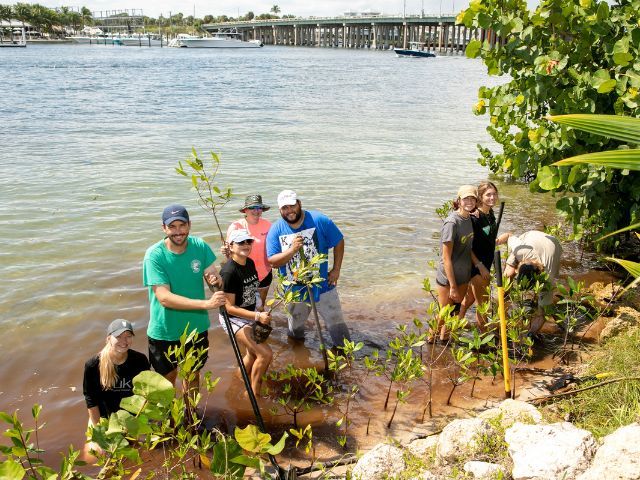
Environmental Education Increases Capacity for Future Conservation Efforts
Environmental education research is being conducted to illustrate the power of environmental education beyond learners to understand the impact that it has on environmental stewardship and conservation.
To examine the ways that programs may meet the goals of conservation science and environmental science education, researchers on one project examined case studies of youth community and citizen science programs. Through observations of programming and interviews with educators and youth program participants, researchers collected data on the programs’ impact on conservation and the youth participants’ environmental science agency (ESA). ESA combines an understanding of environmental science and inquiry practices with the youths’ identification with these practices and their developing understanding that their actions impact the ecosystem.
One of the key factors influencing students’ environmental science agency was whether or not they perceived the project as “real” science or not. Students were found to attribute value to their contribution and legitimate participation in the local and science communities. By participating in real, complex scientific efforts, students felt that their work meant something and was making a difference.
While engaging in their local communities, they changed the landscapes that surrounded them in ways that would be visible in daily life. When the students saw that they held the power to contribute to conservation as a collective, they become motivated to continue to pursue conservation efforts—retaining science and conservation knowledge, skills, roles, and actions, which create the foundation and capacity for future conservation efforts.
By participating in real, complex scientific efforts, students felt that their work meant something and was making a difference.
-----------------------------------------------------
Environmental Education Motivates People to Improve the Environmental Value of Their Surroundings
Through environmental education, people become aware of their local natural environment. When learning about the ways in which ecosystems work together and the problems they face, the impact humans have on the environment becomes apparent. By learning how to remediate the environment, people may become inspired to take action and improve the environmental value of their surroundings.
In a habitat enhancement project with Miami-Dade County public schools, students learned about the anthropogenic activities that have modified their local environment and altered the local habitat, leading to a decline in the number of native butterflies. This environmental education project included informational activities about butterflies and their natural habitat, habitat rehabilitation, and butterfly monitoring. This led to the construction of native butterfly gardens on and around the school grounds, increasing the ecological value of the surrounding area, providing a healthier habitat for butterflies, and motivating faculty, students, and their families to take a more active role in caring for their local environment in the future.
LOOKING FOR ENVIRONMENTAL EDUCATION RESOURCES?EE in Focus, our monthly newsletter, offers educator resources and grant and professional development opportunities.
|
|---|
Environmental Education Deepens Personal Development and Wellbeing
Spending time in nature is thought to have restorative effects. Luckily, environmental education draws people outdoors and allows learners to focus their minds on natural landscapes and concepts. Through learning EE topics, we can deepen our personal development and support our all-over wellbeing.

The Mental Health Benefits of Environmental Education
A 2014 study cites modern society’s disconnect with nature as a leading contributor to growing environmental problems across the world. Overstimulation from electronic media contributes to nature blindness, causing us to further turn to artificial stimuli and away from nature. This launches into a vicious cycle where the less connected we become to nature, the less we feel responsible for its conservation. Not only does this disconnect harm the environment, but it also has adverse psychological and physiological impacts on human beings.
Connectedness with nature is comprised of three components: information about nature, experience in nature, and committed nature connectedness. Environmental education is essential in introducing, strengthening, and fortifying these components in peoples’ lives. Through environmental education, individuals that have high nature connectedness experience many physiological, emotional, mental, social, and spiritual benefits, including:
- Improved cognitive, cardiovascular, and immune functioning
- Reduced crime, aggression, and antisocial behavior
- Reduced symptoms of ADHD in children
- Improved psychological well-being (e.g. mindfulness, meaningfulness, self-actualization, happiness, and vitality)
In 2016, the National Environmental Education Foundation developed this fact sheet on Children's Health and Nature, discussing the role of nature in combating childhood obesity, asthma, and other health concerns. Much of the data is still relevant today.
Environmental Education Strengthens Communities
During environmental education experiences, there are often components of environmental remediation as part of the learning. These remediation efforts can aim to restore natural habitat, clean up pollution, and more. When the natural landscape is positively changed by groups, the entire surrounding community is impacted. Completing such community-based stewardship projects or civic ecology practices can be beneficial for the entire community and those living in it.
Environmental Education Supports Healthy Communities
Place-based learning is an environmental educational approach that uses all aspects of the local environment, including local cultural, historical, and sociopolitical situations, as well as the natural and built environment as the integrating context for learning. In its most developed forms, it includes a clear focus on learning through civic engagement and participation in service projects of obvious relevance to the local school and community. Many schools require students, especially middle and high school students, to participate in service-learning. Environmental projects are a leading choice for service-learning nationwide.
According to a 2011 study, environmental education programs that are “nested within and linked to community-based stewardship or civic ecology practices, such as community forestry, streamside restoration, and community gardening” can lead to ecosystem services and community well-being.
When stewardship education is place-based and takes place in one’s local community, it can develop young people’s sense of the public realm more broadly, in addition to their stake in the natural environment and their communities.
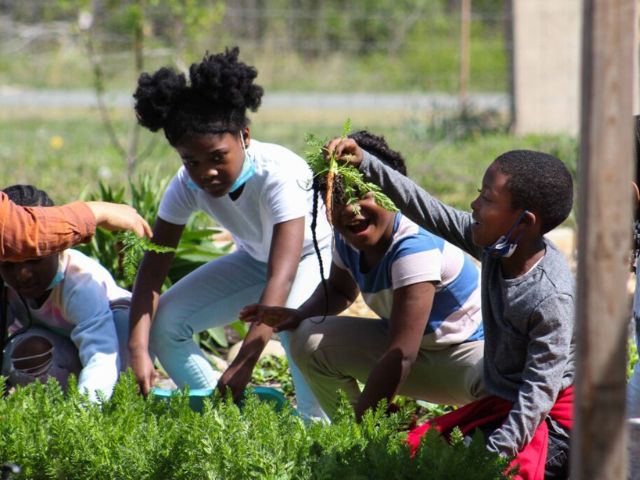
Environmental Education Resources
Greening STEM Approach
Learn how educators can make STEM curriculum more relevant and engaging for students simply by stepping...
Environmental Education Group Games and Activities
A collection of fun, active, and engaging games to help children of all ages learn about the environment.
EE and the Next Generation Science Standards
Next Generation Science Standards (NGSS) emphasize the development of skills students will need in order to...



